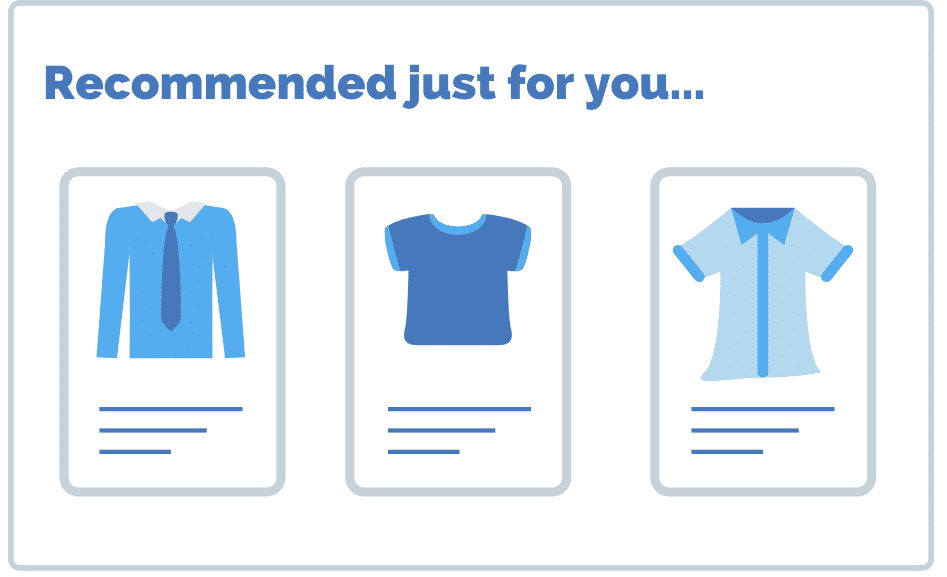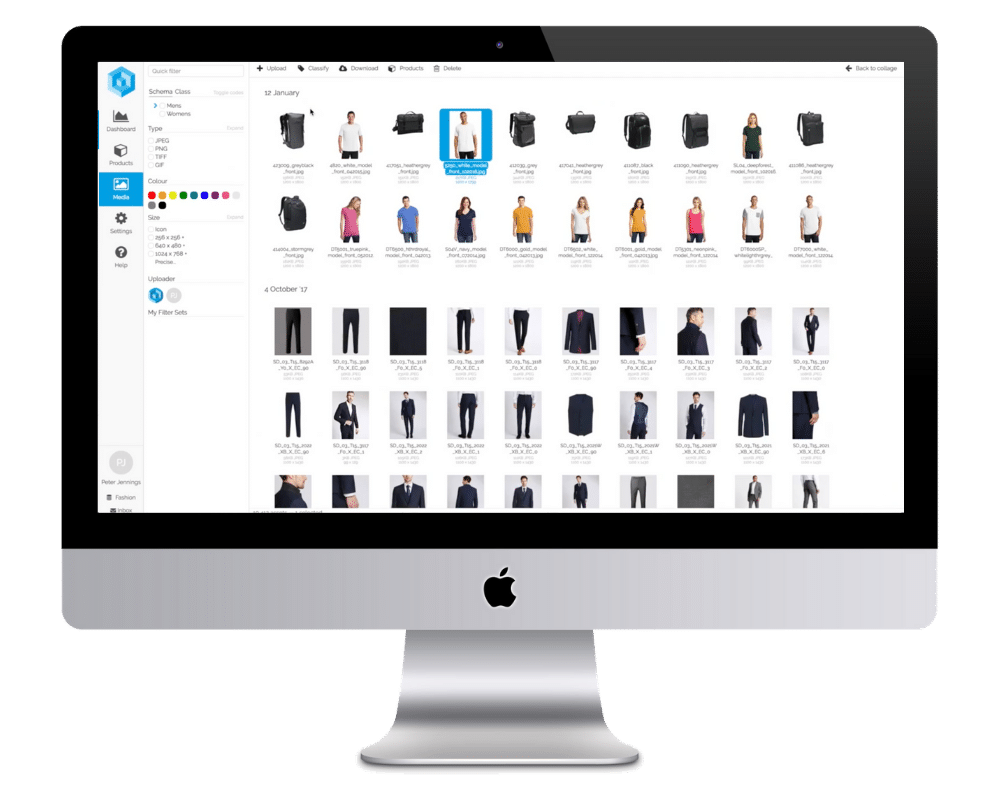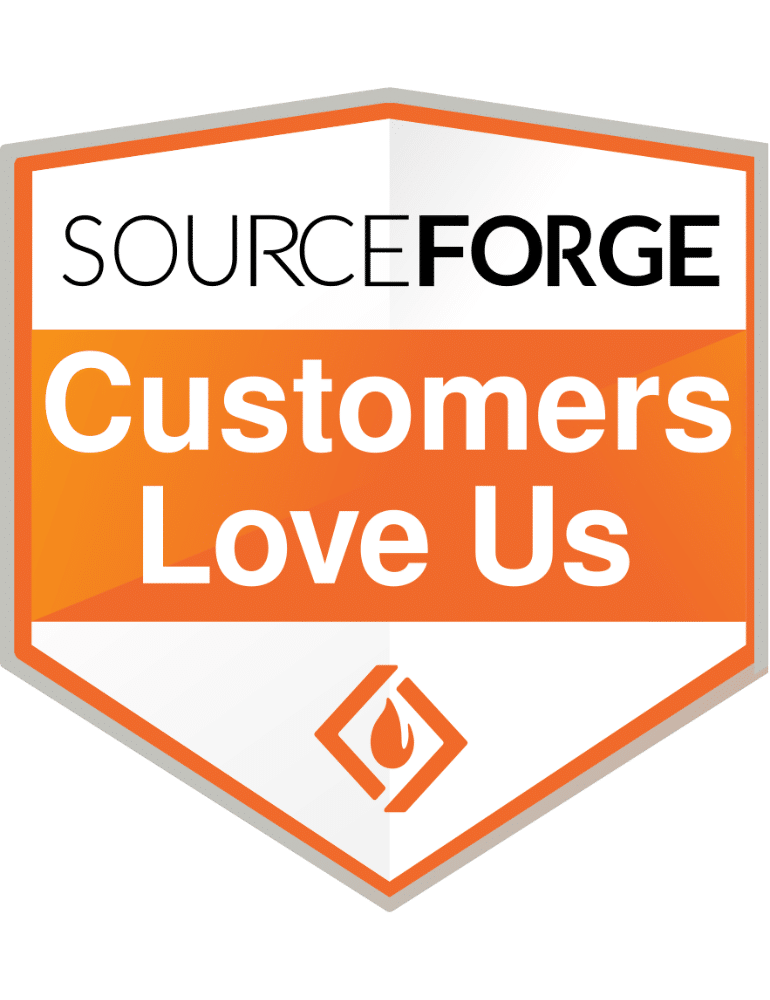Key Takeaways
-
Upsell and cross-sell strategies help retailers grow revenue by deepening relationships with existing customers.
-
Personalization and clean product data are essential for delivering the right recommendations at the right moment.

-
A PIM platform like Pimberly ensures consistent, accurate product information across all sales channels to power better customer experiences.
What Is Upselling and Cross-Selling?
Upselling encourages customers to purchase a higher-end version or upgrade of a product they’re already considering.
Cross-selling, meanwhile, promotes complementary products that enhance the main purchase.
Example: If a shopper buys a laptop, an upsell could be a model with more storage. A cross-sell might be an external mouse or software bundle.
Both strategies aim to increase revenue and customer satisfaction by aligning offers with real needs—not random add-ons.
Use Cases
-
eCommerce retail: Suggest higher-margin or related products during checkout to improve AOV.
-
B2B manufacturing: Offer add-ons like extended warranties or compatible components.
-
Wholesale distribution: Bundle complementary SKUs for smoother procurement.
A recent McKinsey report found that effective upsell and cross-sell programs can lift revenue by 10–30% while improving customer retention rates.
Why It Matters for eCommerce Brands and Retailers
Customer acquisition costs have risen nearly 60% over the past five years, making retention and repeat purchases more valuable than ever. Upsell and cross-sell strategies focus on maximizing the value of existing customers, building loyalty through relevance and trust.

Challenge #1: Poor Product Data Leads to Missed Opportunities
When data lives in silos—ERP, DAM, ecommerce platforms—it’s nearly impossible to surface accurate, personalized recommendations. Inconsistent product information erodes customer confidence and hurts conversion rates.
Solution: Centralized, Enriched Product Data
A Product Information Management (PIM) system, like Pimberly’s centralized platform, eliminates those silos. By consolidating and enriching product information, a PIM ensures all channels—from eCommerce sites to marketplaces—display consistent, high-quality data.
That foundation enables AI-driven recommendations and targeted upsell or cross-sell campaigns tailored to real-time buyer behavior.
1. Use Data to Identify Upsell and Cross-Sell Triggers
The most successful brands know that personalization isn’t guesswork—it’s data science.
Leverage analytics to detect buying patterns, seasonal preferences, and product affinities.
For example:
-
If customers often purchase cameras and SD cards together, create a “Complete Your Kit” bundle.

-
Track order history to identify likely upgrades (e.g., a customer who bought a mid-range phone last year may be ready for the latest model).
When fed into a PIM, these insights help automate which product attributes and images to display, ensuring the most relevant products appear across all touchpoints.
2. Optimize Product Content for Personalized Recommendations
Upselling works only when customers can see the value difference. Detailed, accurate product information—technical specs, lifestyle images, and feature comparisons—makes it easy to justify an upgrade.
A PIM platform standardizes and enriches this content across your catalog:
-
Highlight unique attributes (e.g., “up to 40% faster processing power”).
-
Use dynamic attributes like color, compatibility, or region to ensure relevancy.
-
Sync that data with personalization engines or search platforms like Hawksearch for smarter recommendations.
When product pages tell clear, consistent stories, your customers are more confident in choosing higher-value items.
3. Bundle and Cross-Promote Complementary Products
Product bundling remains one of the simplest yet most effective cross-sell strategies.
Instead of promoting individual products, sell curated sets that solve a problem or deliver convenience.
Example Use Case:
A sporting goods brand bundles running shoes, socks, and a hydration belt into a “Marathon Starter Pack.”
By storing relationships between SKUs in a PIM, marketing teams can easily generate these bundles automatically, ensuring the correct variants and compatible items are featured—without manual data entry.
4. Leverage AI to Automate Upsell and Cross-Sell Recommendations
AI-driven recommendation engines can predict what a shopper will want next—but only if fed with complete and accurate data. That’s where PIM plays a foundational role.

By integrating your PIM with AI search tools, you can:
-
Automate “people also bought” and “upgrade to” suggestions.
-
Train algorithms to prioritize in-stock or high-margin products.
-
Use behavioral data to adjust recommendations dynamically.
As AI reshapes eCommerce, companies that connect clean product data to AI systems will win the personalization race.
5. Tailor Campaigns Based on Customer Lifecycle Stages
Upsell and cross-sell strategies perform best when aligned to where the customer is in their journey.
-
New customers: Cross-sell complementary items to enhance the first purchase.
-
Returning customers: Offer upgrades or subscription-based add-ons.
-
Loyal customers: Use exclusive bundles or early access to premium products.
With centralized product data, marketers can easily segment campaigns and trigger lifecycle-specific recommendations across CRM, email, and eCommerce platforms.
6. Track Performance and Continuously Refine Strategies
Continuous improvement is the secret to long-term success.
Track metrics such as:
-
Average Order Value (AOV)
-
Upsell/Cross-Sell Conversion Rate
-
Customer Lifetime Value (CLV)
Integrating PIM with analytics platforms ensures your data is always up to date, allowing you to measure which product combinations perform best—and automatically push those insights back into your campaigns.
Upsell and Cross-Sell and PIM – Why Product Information Matters
Upselling and cross-selling depend on context, and context depends on data accuracy. A Product Information Management (PIM) platform provides the single source of truth that makes those strategies scalable.
With Pimberly’s cloud-native PIM/DAM, eCommerce teams can:
-
Centralize and enrich product data across all sales channels.
-
Automate associations between SKUs to generate relevant bundles.
-
Deliver consistent messaging that reinforces trust and increases conversion.
By connecting PIM with AI search, CRM, and personalization tools, retailers can deploy real-time, data-driven recommendations that feel intuitive to the customer and profitable for the business.
For a deeper look at how PIM supports omnichannel selling, explore how Pimberly helps streamline ERP integration and digital product experiences.
FAQs
Q: How do I decide which products to upsell or cross-sell?
A: Start with your sales and order data. Look for patterns in frequently bought-together items or product upgrade cycles. Use those insights to create bundles or highlight better-value alternatives at checkout.
Q: What’s the difference between upsell and cross-sell performance metrics?
A: Upsell metrics often focus on increased order value or higher-margin upgrades, while cross-sell performance is measured by attachment rate; the percentage of customers who add a recommended complementary product to their purchase.
Q: Can upsell and cross-sell work in B2B eCommerce?
A: Absolutely. In B2B settings, these strategies might include offering larger pack sizes, extended warranties, or add-on services like installation or training—each of which increases average order value and customer retention.
Takeaways for eCommerce Managers Looking to Master Upsell and Cross-Sell
To summarize: the key to effective upselling and cross-selling is relevance. The more personalized your offers, the higher your conversion rates and the stronger your customer relationships become.
By connecting your eCommerce stack with a centralized PIM like Pimberly, you empower marketing, sales, and merchandising teams to deliver those tailored experiences at scale.
What this means for you:
-
Enrich and organize product data in one place.
-
Enable AI and automation to recommend with precision.
-
Drive more value from every existing customer.
To learn more about how Pimberly can help you create consistent, high-performing upsell and cross-sell campaigns, explore our PIM platform today.













